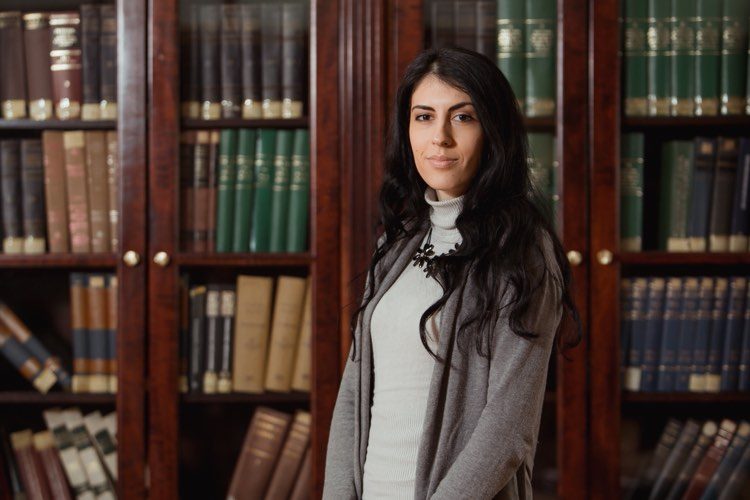
One of the laureates of the national fellowship ‘For Women in Science’ for 2020 is Dr Danica Pavlović of the Institute of Physics, Belgrade. As a biologist at the Laboratory for Holography, Optical Materials and Photonic Crystals at the Institute of Physics, Belgrade she is engaged in the research dealing with the interaction of light and biological matter.
Optical devices used by biologists in the analysis of various samples are the result of fundamental knowledge in photonics. Some of the cutting edge devices of this kind are used by the researches of the Laboratory of Biophysics and Laboratory for Holography, Optical Materials and Photonic Crystals at the Institute of Physics, Belgrade. ‘We have analysed a large number of different samples starting with erythrocytes and haemoglobin, cells of colon cancer, dentine tissue in teeth to chitin structures in insects’, says Dr Pavlović who researched insects in her doctoral thesis too. To be more exact, she analysed physical mechanisms in insects leading to the occurrence of optical effects, and she also researched their role.
By analysing insects or more precisely their chitin structures, the research team whose member is Dr Danica Pavlović has succeeded in imaging very tiny structures in high resolution using non-linear laser microscopy. This technology allows such a result to be obtained without phototoxicity and tissue bleaching. ‘A detailed representation of the morphology and anatomy of these structures facilitates taxonomic ranking. In this manner we contributed to the discovery of new species and subspecies’, emphasizes Dr Pavlović.
Insects are a constant source of inspiration to the researchers of the Laboratory for Holography, Optical Materials and Photonic Crystals, and in their structural colours, they find various applications. ‘They can be particularly important in the dye industry since they do not fade and are environmentally friendly. There are multiple inventions which emerged as replicas of insect surface structures, such as textiles, cosmetics, optic filters, better solar panels, water vapour condensation devices and many others, notes Dr Pavlović citing the anti-counterfeit technology based on butterfly wing scales, Teslagram®, which is patented at the international level.
Instrumental technologies developed by photonics have extensively been applied in medicine, while lasers and other optical devices are broadly used in clinical practice, both in diagnostics and in therapy. ‘Inside a tissue, photons which comprise light, interact with biological matter in various processes which can be classified as scattering and absorption’, elaborated Dr Pavlović who is a part of the Hemmaginero project team for excellent young scientists funded by the Science Fund of The Republic of Serbia. Helmed by Dr Aleksandar Krmpot, the team of this project deals with the analysis of erythrocytes and haemoglobin using microscopic and spectroscopic techniques. Nonlinear laser microscopy is used primarily. ‘The ultimate goal of the research is to recognize the biological basis of various disorders at the erythrocyte level and develop non-invasive methods for diagnosis and disease risk assessment’, states Dr Pavlović adding that the idea of the project is finding detailed information on the functional properties of haemoglobin which results in the comparative analysis of erythrocytes common to healthy and those prevalent in pathophysiological conditions.
After several awards and recognitions, Dr Danica Pavlović was announced one of the laureates of the national fellowship within the L’Oréal-UNESCO international programme titled ‘For Women in Science’ in 2020. In her own words, this honour motivates her further and propels her aspirations for advancement. ‘I also think that this is an opportunity to promote science which is an obligation and duty of each scholar’, emphasizes Dr Pavlović.
Although she maintains that she personally has not met with gender-based bias in scientific research and that she thinks that we as a society have made a lot of progress in terms of equality in science, she also comments that certain difficulties and prejudices persist. ‘Opportunities to work in science are almost equal to man and women. However, due to traditional gender roles women neglect or abandon their career’, says Dr Pavlović explaining that scientific work involves a lot of sacrifices, continual improvement, work outside working hours, for which, in her opinion, women need additional support. ‘This is particularly related to young scientists who need to be encouraged and convinced that they need not choose between a scientific career and a family’, concludes Dr Danica Pavlović.




